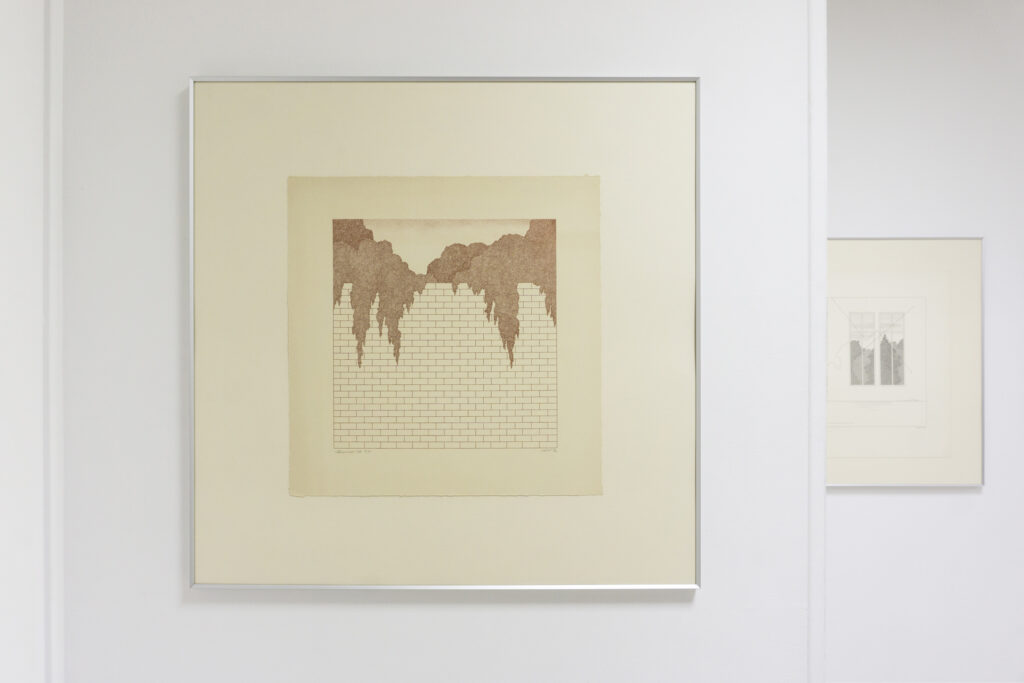
Mare Vint (1942-2020) was a graphic artist whose work mostly focuses on the depiction of “ideal landscapes,” in an attempt to capture a perfect synthesis between nature and man-made structures. In her oeuvre, landscapes are represented as symbols through which she expressed a personal and generalised longing for a harmonic existence. Vint used photographs as a basis for her drawings, using them freely as a source of inspiration, rather than images to be reproduced, allowing her to create scenes which appear familiar to viewers, but which do not exist in reality. Vint’s works lack detail, and yet they present themes in tense, sharp displays of suggestions and compelling empty spaces. Lines are a fundamental element in Vint’s pictorial system – fine lines illustrate her works in a distinctively brittle but simultaneously strong figurative manner.
Vint’s emergence in the late 1960s coincided with changes in the strict political regime which also brought about a shift in the artistic group ‘ANK’. Even though Mare Vint was not a member of ANK, she was involved with the group, as a number of the members were her close friends. Vint made her first lithograph in 1973, and hereafter lithography became her predominantly used medium over colour pencils and Indian ink. Art historian Jüri Hain notes that Vint’s ‘Women, birds and trees’ (1973) is characteristic of her earlier works, while the following decade is represented by the lithograph series’ ‘Air and metal’ (1988) and ‘Between Heaven and Earth’ (1999-2000). During the 1990s, Vint expanded her oeuvre, beginning to use canvas alongside previously used paper. It is also important to note that over time, Vint’s architectural objects have become increasingly simplified.
Mare Vint studied at the State Art Institute of the Estonian SSR between 1962-1967. She has had numerous solo art exhibitions, including at the Pori Art Museum (1982), the Estonian Art Museum (1979), in Münster Kunstverein Sentmaring (1998), the art hall of Toompea castle (with Sirje Runge) (2001), and in Kumu Art Museum (with Jaanus Samma) (2017).
She has participated extensively in international biennials, despite the fact that the Soviet Union prohibited artists from sending their works abroad, for example the International Biennial Exhibition of Prints in Tokyo (1975), Premi International Dibuix Joan Miro in Barcelona (1973), the Norwegian International Print Biennial in Fredrikstad (1982, 1995, 1999), and many others.
In 1972 Vint won the Rijeka international drawing biennial prize, in 1975 she won the Ljubljana Biennial of Graphic Arts prize, and went on to win the Tallinn Print triennial prize in 1977, 1986, 1989 and 1992. In 2015 Mare Vint received the 4th class Order of the White Star.